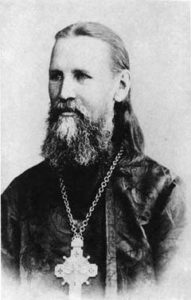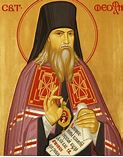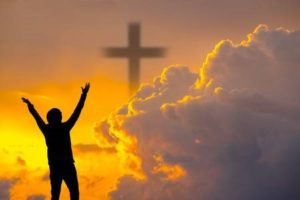SSCORRE!
Saint Sophia Cathedral
Online Resources for our Religious Edification
Topic of the Week – Why Do the Orthodox Hold Religious Processions with Incorrupt Relics, the Cross, and Miracle-working Icons?
Processions are solemn (thankful) and propitiatory (penitential). Especially often, processions with a Crucifixion, icons, singing prayers, burning incense and sprinkling holy water were performed during national disasters (wars, epidemics, natural disasters).
St. John Chrysostom mentions them: “A few days before, on the occasion of heavy rains, there were litanies and prayers, and our whole city, like a stream, rushed to the apostolic places; we pleaded, invoking St. Peter and Blessed Andrew, these two apostles, as well as Paul and Timothy…
…we see in examples from church history the miraculous power of processions. In them, by the grace of God, the material elements are sanctified, they are cleansed of spiritual and physical infection, and they are enlightened by the grace of the Holy Spirit. Because Christ came into the world for its salvation. We are only required to believe in God, love for Him, for people and the desire to work, for example, by becoming a participant in the procession, for the salvation of the soul and for the benefit of the people, calling in prayer to all of us God’s grace….”
Read the entire article here Why do we make processions?
Adult/Family
“The tradition of religious processions has a very ancient history. It begins, in a sense, as early as the Old Testament times. In essence, the procession of the cross is a march, a journey led by the Lord. Therefore, perhaps, one of the first prototypes of the cross processions was the Exodus of the Jews from Egypt under the leadership of God Himself and his prophets and servants Moses and Aaron.
There is something profound and significant in the tradition of religious procession.
The main prototype of future religious processions in the Church in the New Testament is the Way of the Cross of Jesus Christ on Golgotha, during which He was accompanied by the Blessed Virgin Mary, the Holy Apostle and Evangelist John the Theologian, and the myrrh-bearing women. This is where we can see that God blesses processions held in His honor and glory. The procession of myrrh-bearing women to the Holy Sepulchre can also be considered a sacred procession for the sake of God. In the course of this procession they witnessed the great miracle of the Resurrection of Christ….”
Read the entire article here Why do we make processions?
Bright Week Processions on Mount Athos
“Throughout Bright Week, in all the monasteries, sketes, and kellia of Mount Athos, cross processions are held every year.
Preschool/Elementary
Read this well-known story of the life of St. Seraphim of Sarov and what happened in his childhood when a religious procession passed by his house.
As a little boy, was St. Seraphim well or sick? Who told him that he would be healed? What item from the church came around near his house and healed him? What is it called when that item is taken from place to place? [procession].
This is a beautiful painting of the miracle working Kursk Root icon Religious Procession in Kursk Province by Ilya Repin. Why do you think so many people are following the procession? Look at some of the people – are they sick or are they well? How can you tell? Do you think this may have been what it was like when the icon passed near St. Seraphim’s house?
What would you do if you heard that a miracle-working icon or incorrupt relics were going to be in a procession near where you live?
Religious Procession in Kursk Province by Ilya Repin (thehistoryofart.org)
Middle School/
Throughout church history, the faithful have processed with holy relics, icons, and portions of the cross, to sanctify and to protect.
Procession in 1037 in Constantinople to deliver the city from drought
” [There] is a procession recorded for the year 1037 [in Constantinople], in which the swaddling clothes of Christ and other relics were taken from the palace and paraded around the city after a prolonged drought. As in previous moments of despair and crisis, the emperor and his family once again appealed to the city’s most powerful protectors, Christ, the Virgin, and the saints, whose relics were safeguarded inside the imperial palace. Once again, the emperor was able to enlist the divine powers and deliver his city from distress and danger. He could do so, because his predecessors had collected the most powerful relics of Christendom for centuries and gradually transformed the Great Palace into a place where emperors resided and Christ and his saints dwelled among them in both relics and icons.”
Excerpted from Sacred Relics and Imperial Ceremonies at the Great Palace of Constantinople (columbia.edu)
Procession of the Life-Creating Cross
“Because of the many diseases that occur in the month of August, the custom prevailed of old in Constantinople to carry the precious Wood of the Cross in procession throughout the city for its sanctification and its deliverance from illnesses. It was brought forth from the imperial treasury on the last day of July and placed upon the Holy Table of the Great Church of the Holy Wisdom; and beginning today, until the Dormition of the Theotokos, it was carried in procession throughout the city and was set forth for veneration before the people.”
Taken from Procession of the Precious Cross – Greek Orthodox Archdiocese of America (goarch.org)
In the Russian Church, this Feast is combined also with the remembrance of the Baptism of Rus, on August 1, 988. In the “Account of the Order of Services in the Holy, Catholic, and Apostolic Great Church of the Dormition,” compiled in 1627 by order of Patriarch Philaret of Moscow and All Rus, “On the day of the Procession of the Venerable Cross there is a church procession for the sanctification of water and for the enlightenment of the people, throughout all the towns and places.”
Knowledge of the day of the actual Baptism of Rus was preserved in the Chronicles of the sixteenth century: “The Baptism of the Great Prince Vladimir of Kiev and all Rus was on August 1.”
In the present practice of the Russian Church, the Lesser Sanctification of Water on August 1 is done either before or after the Liturgy. Because of the Blessing of Water, this first Feast of the Savior in August is sometimes called ‘Savior of the Water.’ There may also be a Blessing of New Honey today, which is why the Feast is also called “Savior of the Honey.” From this day the newly gathered honey is blessed and tasted.”
Taken from Procession of the Precious Cross – Greek Orthodox Patriarchate of Antioch and All the East
High School
Read below the following TRUE STORY of a miracle that occurred in Prokopi of Evia during a Raging Fire on August 7, 2021; the miracle was a direct result of the Orthodox faithful’s religious procession with sacred incorrupt relics.
Based on the evidence, do you agree with the conclusion of the posting?
Read some of the other instances of processions throughout church history, above. Are processions important in the life of the Church? Why or why not?
_________________
On August 7, 2021 a litany took place in Prokopi of Evia with sacred incorrupt relics and the large holy icon of Saint John the Russian, together with the wonderworking icon of Saints Constantine and Helen from the parish of the same name, in which the whole village participated, while it had an evacuation order given due to the raging fire which was fast approaching the village and despite the ban imposed by the government on litanies.
From here we downloaded the file (Live satellite download): https://zoom.earth/
Anyone who wants can enter the site to verify them.
Keep in mind, there was no rain in the forecast.
20:45 Start of Litany.
21:30 No clouds anywhere in Evia.
22:15 End of the Litany.
03:15 A “strange” cloud appears over Prokopi.
04:30 The “strange” cloud remains above Prokopi.
05:30 The cloud remains and in blue the map captures the heavy rainfall that had already begun!!!!!
Conclusion: In addition to evacuations, there are other possible solutions, as long as there is faith and humility in our soul, and wonderworking intercessors on our side.
For more information: The fire retreated from the Greek city during the procession with the relics of John the Russian
______________________________________________________________________________________________________________________________________
A Message from Maria Spanos
I am passionate about our Orthodox Christian faith and seek to help others learn as much as they can about it. My purpose here is to share online resources that help strengthen our relationship with Christ and bind us closer to His Church. I believe they are invaluable in learning about our precious Orthodox Tradition, and are a great aid for teaching family members, friends and others about Orthodoxy. ~Maria
Two of my favorite quotes:
 “A true Christian behaves in this life so that it may be a preparation for the future one and not only a life here below. In his actions, he does not think what will be said of him here but of what will be said there in heaven; he represents to himself that he is always in the presence of God, of the angels and all the saints, and remembers that someday they will bear witness of his thoughts, words, and deeds.” — Saint John of Kronstadt
“A true Christian behaves in this life so that it may be a preparation for the future one and not only a life here below. In his actions, he does not think what will be said of him here but of what will be said there in heaven; he represents to himself that he is always in the presence of God, of the angels and all the saints, and remembers that someday they will bear witness of his thoughts, words, and deeds.” — Saint John of Kronstadt
__________________________________________________________

“Of all the holy works, the education of children is the most holy.”
— St. Theophan the Recluse







